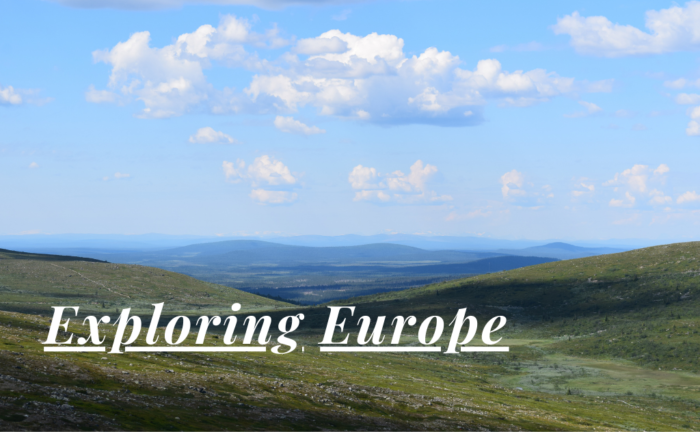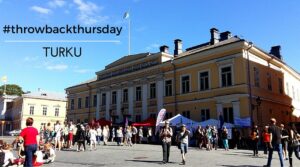Oulu, also known by its Swedish name Uleåborg, is a city in northern Finland. It is the capital of the region of North Ostrobothnia. It is with its around 185.000 inhabitants the largest town in Northern Finland and it is the center of the fourth largest urban area in Finland. Only Helsinki, Tampere, and Turku have larger urban areas.
The city has developed from mostly producing and exporting tar and fish to becoming a technology hub. With the seventh largest university in Finland and the establishment of the first science park in the Nordic countries in 1982, the city has created an image as a high-tech city on the coast of the Baltic Sea.






A Short History of Oulu
Oulu has a history split between three countries. So a short description easily becomes a long one when you start looking into the Swedish era, then continue with the Russian era, and end up with an independent Finland. There are a lot of events taking place in the larger towns when the borders are redrawn so many times.
Oulu as a Part of Sweden
The Oulu Castle, or its Swedish name Uleåborgs slott which was probably more used at the time, was built on an island in the Oulu River in 1590. It is most likely that an even older castle had been present at the site prior to the construction. The castle was rebuilt once more in 1605 and it seems like it might have had a quite calm century ahead. It was the 18th century that proved to be too much for the castle. It was first burned by the Russians in 1715 and another fire caused by lightning in 1793 meant the end of its existence. The pieces that had remained until 1793 did not survive the explosion as the fire spread to a powder magazine.
The town of Oulu, or Uleåborg, was founded by the Swedish King Karl IX in 1605, the same year that the castle was rebuilt. The small town didn’t fare any better than the castle during the troubles of the 18th century. Many attacks by Russian forces took place, especially during the Great Wrath of 1714 to 1721. It took until 1765 before the town’s fortune turned around. This was the year that Oulu received its right to foreign trade. It was especially the locally produced tar that the trade was centered around, a trade that up until this year had to be done through cities like Stockholm.
Oulu as a Part of Russia
Oulu and the rest of Finland became a part of Russia in 1809 with the Treaty of Fredrikshamn. It is likely that many of the last Swedish signs in Oulu disappeared in 1822 when a fire destroyed a large part of the center of Oulu. The town was rebuilt and became during the century the largest tar exporter in Finland. The century also saw a change in attackers of the city.
The Russians had become more friendly and it was instead the British that took over the task of burning things in the town’s vicinity. Well, at least once during the Crimean War. The century saw also the local shipping fleet grow to become the second largest just after Turku. Well, at least until the British Royal Navy destroyed parts of it in 1854. The important tar era of the town continued also after the attack and lasted until 1901 when the tar storage warehouse Tervahovi burned down.
Oulu after Finland’s Independence
Oulu and the rest of Finland would struggle with wars after Finland’s independence from Russia in 1917. The Red Guards established themselves in Oulu in 1906. The Finnish Civil War broke out in 1918, less than a year after independence. The Red Guards and remaining Russian soldiers in Oulu were attacked by the whites and surrendered less than a day later.
The Civil War was not going to be the last war in Oulu after Finnish independence. The Winter War against Russia began in 1939 and Oulu was bombed twice during the fighting. Except for those occasions, the war took place relatively far away. That would change during the Continuation War that broke out in 1941. Finland allied with Germany against Russia and Oulu had during a period more than 4.000 German soldiers in town. The town was bombed five times during the war and had huge damage to its buildings. The Germans retreated from Oulu in 1944 and the town survived further damage during the Lapland War against Germany.
The post-war era for Oulu focused on industrialization, technology, and education. The hydroelectric power plants were built along the Oulujoki River and in 1958 the University of Oulu was founded. The university has today around 13.000 students.








Things to Do and See
Exploring Oulu means exploring the coast of the Baltic Sea, the Oulujoki River, and then the city center. This is one of the largest cities in Finland and the center has a lot going on, especially during the summer. Visiting the ongoing market at the Kauppatori, saying hello to the Toripolliisi, or just enjoying the many wide city streets before heading out to a beach along the coast? That is a possible plan for a day in Oulu.
Kauppatori & Toripolliisi
Kauppatori is the market square where you during some times of the year are able to stroll around the different market stands. It is also where you will find a few of the town’s restaurants as well as the policeman statue. The statue is in memory of the former market square policemen, who guaranteed order on the square. This was a position that was active between 1934 and 1979. The 2.2-meter-high statue took over duty in 1987. He is known as the Toripolliisi and was made by the sculptor Kaarlo Mikkonen.
Northern Ostrobothnia Museum
Northern Ostrobothnia Museum is the regional museum of cultural history. The museum was founded already in 1896 and was moved to its current building on Pakolansaari Island in 1931.
The Oulu Museum Of Art
The Oulu Museum Of Art opened in 1963 and focuses on art created by artists from Northern Finland. This is also a venue for several local and private events.
Tietomaa Science Centre
Tietomaa Science Centre opened in 1988 and exhibits several science demonstrations and experiments. Many of these are in the form of activities performed by the visitors. The Science Centre also has a 45-meter high tower from 1920. It earlier served as the water tower for the tanning plant that at the time was housed in this building.
Oulu Castle
Oulu Castle was destroyed by an explosion in 1793, but the foundation is still standing. The foundation was in 1875 reused by the Oulu School of Sea Captains when they built a small observation tower here. The building has since been converted and the basement is today a museum.
Nallikari Beach
Nallikari Beach is a long sandy beach a short bike ride from the center of the city. It is within the Hietasaari District of the city, one of the islands towards the Gulf of Bothnia.
Oulu Cathedral
Oulu Cathedral was built in 1777. It was originally named after the Swedish king Gustav III’s wife and was known as Sofia Magdalena’s Church. The cathedral is the seat of the Diocese of Oulu, a part of the Evangelical Lutheran Church of Finland.
Oulu City Hall
Oulu City Hall is the current seat of the municipality and dates back to 1886. The city council began using the building in 1920.
Oulujoki River
Oulujoki River runs through the city and is surrounded by small green parks and beaches. The river also has a larger hydroelectric power plant before reaching the Gulf of Bothnia.






How to Get to Oulu
- Flights: Oulu Airport (OUL) is14 kilometers from the center of town. The airport offers mostly domestic and seasonal charter flights.
- Car: Oulu is along the E8 between Tornio and Raahe.
- Train: Oulu has a number of long-distance trains. There are trains to Helsinki, Kuopio, Rovaniemi, and a few more destinations in Finland.
The driving distance from 4 major Finnish cities, according to Google Maps:
- Helsinki – 607 kilometers (6 h 49 min)
- Turku – 648 kilometers (7 h 24 min)
- Vaasa – 319 kilometers (3 h 53 min)
- Joensuu – 395 kilometers (4 h 34 min)
Looking to Explore more of Finland and Europe?








